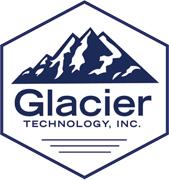Industrial air filtrations systems represent a substantial investment for most companies. Often it is hard to justify the cost of filtration, especially when compared to the lower cost alternative of simply exhausting the contaminated air outside. Filtration has obvious environmental benefits, and with increasingly strict emissions standards coming from the EPA, may be a requirement depending the application. However, environmental benefits are not the only reason filtration systems should be considered. Seldom are the financial benefits of filtration systems taken into account.
So, why is a filtration system a good financial investment for a company to make? In cold weather areas, such as the region that Glacier Technology serves, the answer is the cost of reheating exhausted air.
Let’s consider the example of a small welding shop located in the Minneapolis metro area. This welding shop has:
- 6 welders working per shift
- The working area is 100 feet long by 50 feet wide and the ceiling height is 15 feet
- Along one side of the shop are garage doors for shipping and deliveries
- On the opposite side they have installed two 20” wall propeller fans to exhaust the welding fumes from the working area (Approximately 5,000 CFM each)
It does not take a long time after the first shift starts in the morning for the fumes in the shop to build up. So the garage doors are opened and on come the exhaust fans. The shop gets a nice cross flow of fresh air and the fumes begin to dissipate.
This works great in the summer, but during a typical Minnesota winter the average air temperature is 28°F. That is a 40°F difference from a comfortable indoor air temperature of around 70°F and most workers will not want to keep the garage doors open any longer than is necessary during the winter months. To keep running the exhaust fans, conditioned air must be added to the working area to replace the air being blown outside. This is typically done with a roof top air make up unit.
So, how much money does it cost to heat makeup air? Using the ASHRAE formula for degree heating days, we find the following: In the Minneapolis area over the course of a typical winter, if a factory operates 8 hours a day, 5 days a week, heating makeup air costs around $0.30 per CFM. If the factory operates 24 hours a day, 7 days a week, heating makeup air will cost around $1.25.per CFM. This means the small welding shop we mention above will spend anywhere from $3,000 to $12,500 on continuously reheating make up air.
If instead, the polluted air was filtered and returned to the work area, no make-up air would be needed. This means saving up to $1.25 per CFM per year. With savings like these most filtration systems will see a return on investment within 2 to 3 years. After that it is money in the bank.
Glacier has also worked with customers to help them secure rebates from local utility companies based on the energy savings associated with filtration systems. These rebates can substantial and dramatically reduce the initial cost of investment on an air filtration system.
There are numerous benefits to air filtrations systems. Some are small, like the elimination of cold drafts due to a stable building pressure and more even temperature distribution because of the circulation of the inside air. Some are large, such as the cost saving discussed above, the avoidance of fines from OSHA and the EPA, and the reduction of health hazards to employees. For more information on air filtration systems contact us.
Matt Witter
Mechanical Engineer, Industrial Sales
